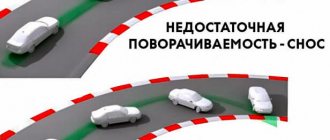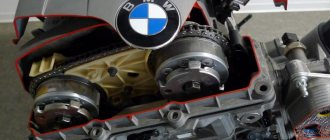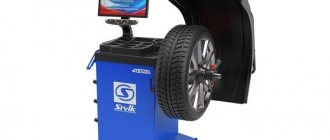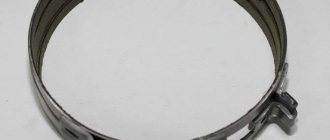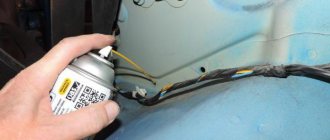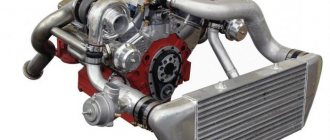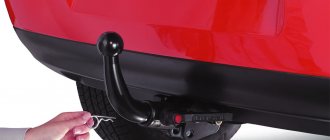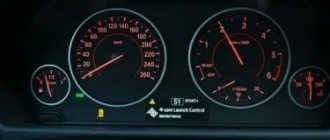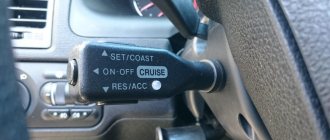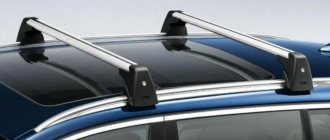Every year, the issue of environmental protection is becoming increasingly relevant, which could not but affect cars. In search of an optimal way to reduce harm from their activities, scientists have already developed more than one option for implementing this idea (one need only remember about electric cars and powering the engine from solar panels), but one of the most little-known methods is the use of urea in diesel power units. In this article we will talk about the features of the innovation, and also find out how rational its use is in practice.
- Urea for diesel, what is it?
- Diesel engine and its impact on the environment
- Benefits of using urea
- Disadvantages of using urea in an engine
- Questions that will interest you Does fuel consumption decrease?
- Is it possible to dilute urea with water?
- Is it possible to make urea yourself?
Urea for diesel, what is it?
Few modern car enthusiasts know what urea is and how it affects the operation of the vehicle. This is not surprising, because our country has not yet introduced Euro standards, which means that the requirements for environmental friendliness of vehicles are not as stringent as in European countries.
As you know, diesel engines operate on the basis of a mixture of air and fuel, which ensures complete combustion of soot. The level of compression of the ignition system under the influence of high temperature and pressure is significantly higher than that of gasoline engines. Such conditions provoke the appearance of large amounts of nitrogen oxides in diesel exhaust gases.
Urea for diesel is a composition of demineralized water and urea, which is considered the best reagent for their neutralization. As a result of the corresponding reactions, the output is water, carbon dioxide and nitrogen. That is, exposure to high temperatures promotes the occurrence of chemical reactions, upon completion of which nitrogen oxides are transformed into a harmless inert gas.
All that is needed to achieve such an effect is to inject a urea solution into the chamber with exhaust gases from time to time, and you don’t have to worry about the condition of the vehicle itself, since this is an organic product and will not harm the mechanisms in any way.
The systems of modern cars are able to independently select the volume and speed of urea supply, for which the design includes unique “controllers” that monitor the performance of the power plant and the amount of exhaust gases. It is also worth noting that the amount of added urea liquid directly depends on the vehicle’s fuel system and in most cases amounts to 2-6% of the volume of fuel consumption. This dosage can provide long intervals between fluid replenishments.
Diesel engine and its impact on the environment
From the point of view of harm to the environment, modern diesel engines are exactly the same as their gasoline counterparts. On classic designs, it is possible to install only oxidative exhaust gas catalysts, which, in turn, oxidize only CO and CH, resulting in water and harmless carbon dioxide.
In the old days, such converters broke down due to exposure to sulfur compounds and soot particles accumulating on the surface of the catalyst, but with the advent of the “Common rail” system, in which the injection of the fuel mixture is carried out by electronically controlled nozzles, everything has changed.
An adjusted diesel engine emits less harmful exhaust gases into the atmosphere than a similar installation that does not have this feature. In particular, in this case, the carbon monoxide level is slightly lower than that of gasoline engines.
The main components of harmful exhaust gases are hydrocarbons (HC or CH), oxides (or, as they are also called, “oxides” of nitrogen) and soot (along with all its derivatives), which escapes in the form of black smoke.
The main culprits behind their spread are considered to be trucks and buses, which in our country are very often old and unregulated.
We recommend: How do additives work to reduce noise in a box?
Do you know? The first diesel engine was patented by the German engineer and inventor Rudolf Diesel back in 1892. The new engine had a higher coefficient of performance (efficiency) and was easy to use, which could not be said about the popular steam engines of those days.
Benefits of using urea
In addition to being highly environmentally friendly, urea in diesel engines has other advantages. First of all, it is worth noting the increased power of BlueHDi engines (on average by 7-10%!) and their greater fuel efficiency. In addition, the positive aspects of its use include the absolute harmlessness of the composition to humans, a reduction in the tax on exhaust emissions (however, much depends on the legislation of a particular country) and free movement on public roads without fear of being fined.
Disadvantages of using urea in an engine
Of course, like any other composition, urea cannot but have its drawbacks. In truth, today it is already quite difficult to calculate what the difference is between a regular HDi diesel engine and a BlueHDi engine, since in our country the latter comes complete with an automatic transmission, and to compare it with the “HDi + manual transmission” version in medium and expensive car trim levels is simply incorrect.
However, you can try to compare the cost of spare parts for these power plants. For example, French motorists often use an SCR catalyst, which is located in a single unit with a DPF filter, rightly noting that hot exhaust gases are best treated and purified in the same place.
Interesting fact! In 1999-2000, the PSA group was one of the first automakers to introduce a DPF filter to combat soot, which was perfectly compliant with Euro-3 standards. This once again proves that PSA is one of the leaders in the diesel car market, both in European countries and in Ukraine.
Thus, the two technologies DPF and SCR are combined in one unit, although if it is damaged, the car owner will have to pay a hefty price for repairs, since both components themselves are quite expensive.
Along with the rather high cost, the disadvantages of using urea in diesel cars include the fact that the smell of exhaust gases will not be the most pleasant, and this is very annoying for many drivers. Moreover, the composition freezes easily at sub-zero temperatures, and if it comes into contact with human skin, it can cause an allergic reaction and irritation. A negative aspect of using this version of diesel engines is that in our country there are no high-quality special gas stations with which you could add urea.
Diesel urea also contains ammonia, the fumes of which can adversely affect human skin and eyes.
For those car enthusiasts who do not like this function of the diesel engine at all, it is possible to disable it (software disabling, disabling by “freezing” or de-energizing the SCR system).
Interesting! It turns out that urea is directly related to urine. So, in 1773, the French chemist Hilaire Marin Ruel managed to isolate it from human urine. A little later, more precisely in 1828, the German chemist Friedrich Wöhler, using the process of evaporation of ammonium cyanate dissolved in water, obtained an organic compound whose characteristics resemble those of urea. From this moment the history of organic chemistry began, since for the first time it was possible to obtain an organic compound synthetically.
Questions that may interest you
Does fuel consumption decrease?
There is a lot of controversy about reducing fuel consumption thanks to urea. Some claim that it has nothing to do with the combustion process of the fuel mixture, and therefore cannot affect the reduction in fuel consumption, while other experts provide very convincing arguments in favor of the effectiveness of this saving method. For example, a Peugeot 508, which has 163 hp under the hood, consumes 7.6 liters per 100 km in urban conditions, while on the highway this figure reaches 4.6 liters.
We recommend: What you need to know about installing gas equipment on cars in 2019
With a mixed driving cycle, fuel consumption corresponds to 5.7 liters. With the upgraded and more powerful BlueHDi engine, fuel consumption is slightly reduced: within the city - 5.2 l; on the highway - 3.8 liters, on mixed roads - 4.3 liters.
Is it possible to dilute urea with water?
Among the most common questions about urea, it is worth highlighting one that comes up quite often: “can AdBlue be diluted with water?” It should be noted right away that it will not be possible to save in this way, since the NO sensors located at the inlet of the catalyst accurately determine the amount of nitrogen dioxide in the exhaust gases, on the basis of which the required amount of urea solution is selected taking into account its standard concentration (32.53%!) .
The second NO sensor, located at the outlet of the catalyst, monitors the efficiency of the system and the degree of exhaust gas purification. Therefore, if you reduce the concentration of the solution, the remaining urea will not be enough to effectively neutralize nitrogen dioxide, for which this composition is used. The control system will immediately “see” this shortage and give the pump a command to increase the supply of reagent to increase the neutralization efficiency to the specified parameters.
Note! If you dilute urea with ordinary, rather than demineralized water, then the metal salts that are present in it will simply disable the system, which will not take much time.
Is it possible to make urea yourself?
Purely theoretically, you can try to make urea yourself, but practice shows that such a composition will be very far from ideal. It is simply impossible to create an effective composition of the required quality at home.
Firstly
, granulated urea (urea), which is also a fairly common mineral fertilizer, is most often considered as the main available raw material for the production of AdBlue urea. However, the granules are coated with a special composition, which during storage prevents the granules from caking and sticking to each other. It is this substance that kills the components of the AdBlue system, and it is almost impossible to filter it.
Secondly
, the most common
mineral fertilizer urea (granules) contains 1.6% biuret, while its level in AdBlue should not exceed 0.3%!
This substance negatively affects the service life of the catalyst. The third reason
The reason why you will not be able to create urea at home is that this solution must be made on the basis of demineralized water so that the metal salts present in ordinary liquid do not clog the pores of the catalyst and do not render it inoperable before the allotted time. Of course, you can find such water, but it is clear that you will have to spend money on it.
In any case, using homemade urea liquid is fraught with unpleasant consequences, and if you know what exactly urea is needed for (including for use on trucks), you will immediately understand that conducting “home” experiments is very unprofitable.
Subscribe to our feeds on social networks such as Facebook, Vkontakte, Instagram, Pinterest, Yandex Zen, Twitter and Telegram: all the most interesting automotive events collected in one place.
What is urea for diesel
Attempts to remove one of the components of exhaust gases lead to an increase in the content of the other. If you try to get rid of soot in diesel exhaust, harmful nitrogen oxide will begin to go off scale and vice versa. Designers developed filters to combat soot, which began to be installed in the fuel system of diesel engines. To neutralize harmful nitrogen oxide, it was necessary to come up with a fundamentally new system involving the use of urea.
Diesel urea, sold in car dealerships, is a liquid consisting of water and a chemical compound that decomposes into ammonia and carbon dioxide. The ammonia obtained from this mixture can be used to neutralize hazardous emissions. This process takes place in a special SCR catalyst.
Urea consumption depends on engine size, so trucks consume much more of the compound than cars. But, contrary to the negative expectations of motorists, the use and maintenance of such an exhaust gas purification system is relatively inexpensive, especially for passenger cars.
Urea as a fertilizer - high efficiency at minimal cost
Often the producer of the urea solution using the “direct method” is called the “Primary Producer” of AdBlue.
And “blending” (secondary method) involves the acquisition by an AdBlue manufacturer of urea in granules at the same Nitrogen Plant and its subsequent mixing with demineralized water in its production.
The “direct method” is considered more advanced, since the granulation process itself and the subsequent movement of raw materials to the manufacturer are eliminated, which ensures the highest quality AdBlue and largely eliminates possible undesirable impurities in the finished urea solution for diesel.
In any case, all "primary" and "secondary" AdBlue manufacturers are official licensees of the AdBlue trademark, strictly adhere to the standards and requirements in this area and produce a quality guaranteed product that complies with the ISO 22241-1 standard.
Along with licensed, that is, legal AdBlue manufacturers, there are others on the Russian market who do not have the right to call their product AdBlue. In order to give the buyer confidence in their “urea” and make a connection with the quality of licensed AdBlue, these manufacturers often call their products with similar names, where the word “BLUE” appears such as this-Blue, that-Blue, best-Blue, etc. Sometimes they even call their urea for diesel a “complete analogue of AdBlue,” which misleads the consumer and is a violation of copyright in the AdBlue trademark.
The quality of "imitation" products is not guaranteed by any quality control systems.
All car manufacturers recommend using “diesel urea” under the brand name AdBlue. This will ensure the quality of the AdBlue fluid used in the SCR system and the durability of the vehicle's catalyst components.
Today in Russia there are 4 legal licensed AdBlue manufacturers.
The only one in Russia is the EUROCHEM company.
Use only licensed AdBlue fluid in your car!
AdBlue catalog ISO 22241-1
Why is urea needed for diesel?
Engineers are constantly looking for an answer to the question - how to reduce the amount of harmful emissions? Reducing engine volumes is unlikely to have a positive impact on the situation - people are too dependent on road transport, which allows us to deliver the goods we need by land. The carrying capacity of trucks will be reduced, resulting in the need to make several trips instead of one. An alternative way that can and should be used is to neutralize emissions from internal combustion engines.
Using an SCR catalyst and urea is one way to significantly reduce diesel engine emissions. Moreover, the component itself is absolutely harmless to humans and the environment. The system independently calculates the required amount of the component based on data on the current intensity of engine use. The greater the load, the more urea is injected into the SCR catalyst. Thus, the use of urea helps reduce harmful emissions.
Pros and cons of the system
Reducing the harmful emissions of diesel engines into the atmosphere is not the only advantage of the SRC system. Also, using SRC has the following advantages:
- engine power increases significantly;
- there is a slight decrease in the level of fuel consumed;
- low fluid consumption - a passenger car will travel 5-10 thousand km on one canister.
However, the use of urea also has its disadvantages, which largely make its use in diesel vehicles impractical. These include:
- increasing complexity of the system, which leads to more frequent breakdowns;
- additional maintenance costs (an AdBlue canister will cost from 500 rubles);
- freezing at temperatures below -11 °C.
It is the inability to use AdBlue at standard temperatures for domestic winter that makes it impractical in Russian conditions, even though the urea tank is equipped with special heating to prevent the liquid from freezing.
At the same time, diesel cars purchased in Europe are equipped with this system by default; they are now freely sold on the Russian market. It is also necessary to equip your “iron horse” with such a system when traveling to Europe - otherwise you may face a rather large environmental fine. Therefore, a considerable number of domestic owners of diesel cars still have to maintain the SRC system, if their car is equipped with one, and buy urea.
How does urea work in an engine?
Emissions from a diesel power unit contain 2 main harmful components: soot and nitrogen oxide. To combat soot, which is a dangerous carcinogen, a particulate filter was invented to delay the penetration of soot into the atmosphere. As for nitrogen oxide, the problem of emissions of this substance into the atmosphere was solved using the SCR (Selective Catalytic Reduction) liquid system. The SCR system was developed by FPT Industrial, part of the Fiat holding. Now the invention of the Italian company is used by all European manufacturers of diesel cars.
The operation of the SRC system is based on a simple chemical reaction. The spent exhaust gases in the combustion chamber interact with an aqueous solution of urea coming from the neutralizer tank through injection by an injector.
Under the influence of high temperature, urea decomposes into isocyanic acid and ammonia. The chemical reaction of nitric oxide and ammonia produces water vapor and harmless nitrogen. The remaining chemical compounds simply burn in the combustion chamber. As a result, the harmfulness of diesel vehicle exhaust is sharply reduced, since the dangerous compound nitrogen oxide is neutralized.
Initially, the liquid neutralization system was used in power units of trucks, but gradually found its application in passenger diesel cars. The use of SRC, an anti-particulate filter and a catalyst makes it possible to achieve environmentally friendly emissions at the Euro-5 and Euro-6 levels.
Using urea to clean exhaust
Tightening environmental regulations and standards has pushed automakers to create even more advanced systems, which are now actively used on diesel internal combustion engines. Such solutions made it possible to reduce the amount of nitrogen oxide.
One of the most common cleaning schemes is Bluetec technology. This system uses a whole range of exhaust cleaning elements:
- particulate filter;
- oxidation catalyst;
- liquid system for neutralizing nitrogen oxide;
This solution was developed and is actively used by the German auto giant Mercedes-Benz on various models of commercial and passenger diesel cars. Trucks equipped with Bluetec have a separate tank into which an active reagent called AdBlue is poured. The specified reagent is a solution of urea with water (water and ammonia). A special dosing device automatically injects a urea solution into the exhaust system of a diesel car, where the exhaust gases and urea solution for diesel are mixed.
After mixing the urea with the exhaust, the specified mixture enters the SCR (selective catalytic reduction) converter. This neutralizer is distinguished by the fact that it works on a selective principle. Ammonia, which is found in diesel urea, reacts with nitrogen oxides under the influence of the catalytic layer in the converter and high temperatures of up to 300 degrees Celsius. The result is the decomposition of nitrogen oxides into nitrogen and water. Other toxic compounds also burn out in the neutralizer. A similar scheme is used on passenger cars with the specified cleaning system.
Diesel engine and ecology
Diesel engine compression ratio - what is it?
As technology developed, increasingly stringent standards and requirements regarding the harmfulness of exhaust gases began to be put forward for internal combustion engines. The installation of catalytic converters on gasoline internal combustion engines made it possible to solve this problem quite effectively. Moreover, the engineers managed to complete the task without significant design changes to the engine itself and its fuel equipment.
The catalyst is installed in the exhaust system. The body of such a catalytic converter has double walls, between which there is a special heat-resistant shell. There are also special “honeycombs” inside the catalyst, which can be made of ceramic or metal. These honeycombs are coated with a small layer of a substance that reacts chemically with exhaust gases. In other words, the active substance on the honeycomb is a catalyst that converts harmful compounds in the exhaust by oxidizing them into carbon dioxide, nitrogen and water.
Today, catalysts are widely used that are based on three components: platinum, palladium and rhodium. Platinum and palladium neutralize carbon monoxide and hydrocarbons, while rhodium effectively interacts with nitrogen oxides. The advantages of such catalytic converters include efficiency, ease of manufacture, and long service life.
As for diesel engines, the list of toxic components in their exhaust gases (unlike a gasoline unit) includes soot. The presence of nitric oxide was also significantly noted. The formation of a large amount of soot occurs due to the individual characteristics of the mixture formation process in diesel engines.
It is well known that soot is a harmful carcinogen that can trigger the formation of cancer cells. It is worth noting that attempts to reduce the amount of soot in diesel exhaust gases lead to a significant increase in nitrogen oxide content, and reducing nitrogen oxide emissions means a sharp increase in the amount of soot. In other words, a decrease in the content of one toxic component leads to a natural increase in another. This feature affects various operating modes of a diesel engine.
To combat soot, diesel cars are equipped with particulate filters. Such filters operate on the principle of a special catcher. Soot particles settle on the filter mesh. When the mesh becomes clogged, the engine control system activates the soot afterburning process, thus regenerating the particulate filter and normalizing its throughput.
